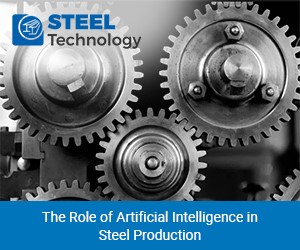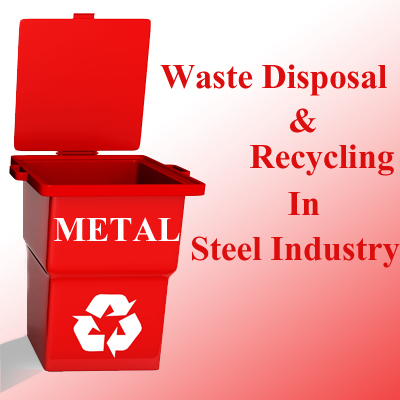Insightful Advances: Inspection Technology Revolutionizing the Steel Industry

Introduction
In today's rapidly evolving steel industry, staying ahead of the game requires staying ahead of the technology curve. One technology making a significant impact is inspection technology. By providing unprecedented visibility into manufacturing processes, inspection technology is revolutionizing the steel industry, enhancing quality control, optimizing efficiency, and reducing costs.
With the ability to detect even the slightest imperfections in steel products, inspection technology ensures that only the highest-quality materials make it to the market. This not only improves customer satisfaction but also prevents potential safety hazards down the line. Furthermore, with real-time data on production performance, manufacturers can identify and address any issues quickly, minimizing downtime and maximizing productivity.
From laser scanning to advanced imaging techniques, inspection technology offers a range of tools that allow steel manufacturers to better understand their processes and make data-driven decisions. By embracing these insightful advances, companies can position themselves as leaders in the industry and ensure their continued success in a competitive market.
The steel industry is experiencing a technological revolution, and inspection technology is at the forefront, driving innovation and transforming the way steel is produced. Stay tuned to discover the exciting possibilities and opportunities this technology brings to the steel industry.
I. Traditional Methods vs. Advanced Inspection Technology
In the past, steel manufacturers relied heavily on traditional inspection methods, such as visual inspections and manual measurements. While these methods have been effective to some extent, they are time-consuming, prone to human error, and lack the precision necessary for detecting subtle defects.
Advanced inspection technology, on the other hand, offers a more accurate and efficient way to inspect steel products. It utilizes cutting-edge equipment and software to capture detailed data and analyze it in real-time. By automating the inspection process, manufacturers can significantly increase their productivity and reduce the risk of defects slipping through the cracks.
One of the key advantages of advanced inspection technology is its ability to detect even the smallest imperfections that may be invisible to the naked eye. With high-resolution imaging and non-destructive testing techniques, manufacturers can ensure that their products meet the highest quality standards, improving customer satisfaction and brand reputation.
Furthermore, advanced inspection technology provides a wealth of data that can be used to optimize production processes. By analyzing this data, manufacturers can identify patterns, trends, and potential areas for improvement. This allows them to make data-driven decisions and implement changes that lead to increased efficiency, reduced waste, and ultimately, cost savings.
II. Types of Inspection Technology Used in the Steel Industry
The steel industry has embraced various types of inspection technology to improve its processes and ensure the highest quality of products. These technologies provide a range of capabilities, from surface inspections to internal defect detection. Let's explore some of the most commonly used inspection technologies in the steel industry:
Laser Scanning: Laser scanning technology uses lasers to capture precise measurements and create a digital representation of the scanned object. In the steel industry, laser scanning is used to measure and inspect the dimensions of steel products, ensuring they meet the required specifications. This technology is especially useful for complex shapes and intricate designs.
Ultrasonic Testing: Ultrasonic testing involves the use of high-frequency sound waves to detect internal defects in steel products. By sending ultrasonic waves through the material and analyzing the reflected waves, manufacturers can identify cracks, voids, and other imperfections that may compromise the structural integrity of the steel. This non-destructive testing technique is widely used in the steel industry for quality control purposes.
Magnetic Particle Inspection: Magnetic particle inspection is a technique used to detect surface and near-surface defects in ferromagnetic materials, such as steel. It involves applying a magnetic field to the material and then applying iron particles to the surface. If there are any defects, the particles will accumulate at those locations, making them visible under proper lighting conditions. This method is particularly effective for detecting cracks, weld defects, and other surface imperfections.
X-ray Inspection: X-ray inspection utilizes X-ray radiation to penetrate the steel and create an image of the internal structure. This technology is commonly used to detect internal defects, such as voids, inclusions, and porosity. By analyzing the X-ray images, manufacturers can ensure the structural integrity of their steel products and identify any potential issues that may arise during use.
These are just a few examples of the inspection technologies available in the steel industry. Each technology offers unique capabilities and advantages, allowing manufacturers to tailor their inspection processes to their specific needs.
III. Benefits of Using Inspection Technology in the Steel Industry
The adoption of inspection technology in the steel industry brings numerous benefits to manufacturers, customers, and the industry as a whole. Let's delve into some of the key advantages:
Improved Quality Control: Inspection technology enables manufacturers to detect even the smallest defects in steel products, ensuring that only the highest-quality materials make it to the market. By reducing the risk of faulty products, manufacturers can enhance customer satisfaction and build a strong reputation for delivering reliable and durable steel products.
Enhanced Safety: Steel products play a critical role in various industries, and any defects or failures can have serious consequences. Inspection technology allows manufacturers to identify potential safety hazards early on, preventing accidents and ensuring the safety of workers and end-users. By implementing thorough inspections, manufacturers can be confident in the reliability and performance of their steel products.
Optimized Efficiency: Inspection technology provides real-time data on production performance, allowing manufacturers to monitor and optimize their processes. By identifying bottlenecks, inefficiencies, and areas for improvement, manufacturers can streamline their operations, reduce downtime, and increase overall productivity. This leads to cost savings and a more competitive position in the market.
Cost Reduction: By minimizing defects and improving efficiency, inspection technology helps manufacturers reduce costs associated with rework, scrap, and customer returns. Additionally, the data provided by inspection technology allows manufacturers to make informed decisions regarding material selection, process optimization, and resource allocation. This results in significant cost savings and a higher return on investment.
IV. Challenges and Limitations of Inspection Technology in the Steel Industry
While inspection technology offers numerous benefits, it is not without its challenges and limitations. Steel manufacturers need to be aware of these factors to ensure successful implementation. Let's explore some of the key challenges:
Initial Investment: Implementing inspection technology requires a significant initial investment in equipment, software, and training. For smaller companies with limited resources, this can be a barrier to adoption. However, it is important to consider the long-term benefits and return on investment that inspection technology can provide.
Expertise and Training: Operating inspection technology requires specialized knowledge and skills. Manufacturers need to invest in training their workforce to properly operate and interpret the data provided by the inspection equipment. This ensures accurate and reliable results, as well as the ability to identify potential issues and take appropriate action.
Integration with Existing Processes: Integrating inspection technology into existing production processes can be challenging. Manufacturers need to carefully plan and coordinate the implementation to minimize disruptions and ensure a seamless transition. This may involve reconfiguring workflows, incorporating new software systems, and adapting to new inspection procedures.
Limitations of Technology: While inspection technology has advanced significantly, there are still limitations to consider. Some defects or imperfections may go undetected depending on the specific technology used. Manufacturers need to assess the capabilities and limitations of each technology to determine the most suitable approach for their specific requirements.
By addressing these challenges and limitations, steel manufacturers can maximize the benefits of inspection technology and overcome any potential obstacles in its implementation.
V. Future Trends and Advancements in Inspection Technology for the Steel Industry
The field of inspection technology is constantly evolving, driven by the need for more efficient and effective solutions in the steel industry. Several trends and advancements are expected to shape the future of inspection technology. Let's explore some of these exciting developments:
Artificial Intelligence and Machine Learning: The integration of artificial intelligence (AI) and machine learning (ML) algorithms into inspection technology is set to revolutionize the industry. AI-powered systems can analyze vast amounts of data in real-time, identify patterns, and detect anomalies with a high degree of accuracy. This will enable manufacturers to automate the inspection process further and make more informed decisions based on predictive analytics.
Robotics and Automation: The use of robotics and automation in inspection technology is becoming increasingly prevalent. Robots equipped with advanced sensors and cameras can perform inspections with precision and speed, reducing the need for manual labor and improving overall efficiency. This trend is expected to continue, with robots playing a more significant role in inspection processes.
Advanced Imaging Techniques: Advancements in imaging technology, such as hyperspectral imaging and 3D scanning, are expanding the capabilities of inspection technology. These techniques allow for more detailed and comprehensive analysis of steel products, enabling manufacturers to detect even the most subtle defects and make accurate assessments of quality.
IoT and Connectivity: The Internet of Things (IoT) is revolutionizing industries across the board, and the steel industry is no exception. By connecting inspection equipment to a centralized system, manufacturers can gather real-time data, monitor performance, and detect potential issues remotely. This connectivity enables proactive maintenance, reduces downtime, and improves overall operational efficiency.
These are just a few examples of the future trends and advancements in inspection technology. As technology continues to advance, the steel industry can look forward to even more sophisticated and powerful tools for quality control and process optimization.
VI. Training and Certification for Using Inspection Technology in the Steel Industry
To ensure the successful implementation and operation of inspection technology, proper training and certification are crucial. Steel manufacturers should invest in training programs and certifications for their workforce to ensure they have the necessary skills and knowledge to operate and interpret the data provided by inspection technology.
Training programs should cover the fundamentals of inspection technology, including the principles, operation, and maintenance of the equipment. Additionally, training should focus on data analysis and interpretation, as well as troubleshooting and problem-solving in the context of inspection technology.
Certifications can provide manufacturers with an assurance that their workforce has met the required standards of proficiency in operating inspection technology. Certification programs may be offered by industry associations, equipment manufacturers, or specialized training institutions. By ensuring their workforce is properly trained and certified, manufacturers can maximize the benefits of inspection technology and ensure accurate and reliable results.
VII. Cost Considerations and Return on Investment for Implementing Inspection Technology
Implementing inspection technology in the steel industry involves an initial investment in equipment, software, training, and integration. While this investment may seem significant, it is important to consider the long-term benefits and return on investment that inspection technology can provide.
By implementing inspection technology, manufacturers can reduce costs associated with rework, scrap, and customer returns. The ability to detect defects early on minimizes the need for costly repairs or replacements, resulting in significant cost savings. Additionally, the optimization of production processes and increased efficiency lead to reduced downtime, improved productivity, and overall cost reduction.
Moreover, inspection technology enhances the quality of steel products, improving customer satisfaction and building a strong reputation for reliability. This, in turn, can lead to increased sales, repeat business, and a competitive edge in the market.
While the initial investment may require careful financial planning, the long-term benefits and return on investment make inspection technology a worthwhile investment for steel manufacturers looking to stay ahead in a competitive industry.
Conclusion: The Transformative Impact of Inspection Technology in the Steel Industry
Inspection technology is revolutionizing the steel industry, providing unprecedented visibility into manufacturing processes and driving innovation. By embracing advanced inspection technologies, steel manufacturers can improve quality control, optimize efficiency, and reduce costs. The ability to detect even the smallest defects ensures that only the highest-quality materials make it to the market, enhancing customer satisfaction and preventing safety hazards.
With real-time data on production performance, manufacturers can make data-driven decisions, identify areas for improvement, and maximize productivity. The implementation of inspection technology brings numerous benefits, including improved quality control, enhanced safety, optimized efficiency, and cost reduction.
While there are challenges and limitations to consider, such as initial investment and expertise requirements, the future of inspection technology in the steel industry is promising. Advancements in AI, robotics, imaging techniques, and connectivity will continue to shape the industry, enabling more efficient and effective inspection processes.
Proper training and certification are essential for the successful implementation and operation of inspection technology. By investing in workforce training and certification programs, manufacturers can ensure accurate and reliable results, as well as maximize the benefits of inspection technology.
In conclusion, inspection technology is transforming the steel industry, empowering manufacturers to achieve higher levels of quality, efficiency, and competitiveness. As the industry continues to evolve, inspection technology will play an increasingly vital role in driving innovation and ensuring the continued success of steel manufacturers in a dynamic and demanding market.











